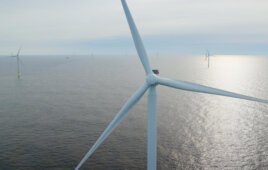This article comes from the NewsWire of law firm Chadbourne & Parke and is authored by the always reliable Keith Martin
U.S. generating capacity stood at 1,183,740 MW at the start of 2017.
Coal continues to fall as a percentage of the total. Current coal capacity is 291,790 MW, or 24.65% of US generating capacity, according to figures released by the Federal Energy Regulatory Commission on February 1. Coal retirements in 2016 were approximately 8,900 MW, according to Platts Analytics. The utilities that own the 2,250-MW Navajo Generating Station in Arizona announced plans in February to close it.
Gas capacity accounts for 511,740 MW or 42% of total US generating capacity. Another 8,689 MW of gas-fired power plants went into service in 2016.
Total US wind capacity is 81,870 MW or 6.9% of the US total. Another 7,865 MW of new wind farms were built in 2016.
US solar capacity is 23,700 MW. Another 7,748 MW of new solar capacity was added in 2016, according to FERC. GTM Research and the Solar Energy Industries Association put the 2016 capacity additions at 14,635 MW.
Solar additions are expected to slow in 2017. The US Energy Information Administration expects another 5,700 MW, including rooftop installations. Platts Analytics has the figure at 2,500 MW. Platts is tracking 6,900 MW of new wind farms that it expects to come online in 2017. It sees 12,900 MW of new gas-fired power plants either under construction or in late-stage development.
All of this is occurring in a market in which electricity demand is flat. US electricity demand fell in 2016 for the second straight year, according to the Energy Information Administration. EIA reported average daily demand of 10.69 trillion MWhs a day in 2014, 10.68 in 2015 and 10.58 in 2016.
Electricity prices set record lows in 2016. The PJM western hub, which is the most actively traded US power location, saw spot prices average $28.78/MWh in 2016, a 19% drop. Spot prices in ERCOT averaged $24.65/MWh in 2016, the lowest level on record.
Filed Under: Projects





